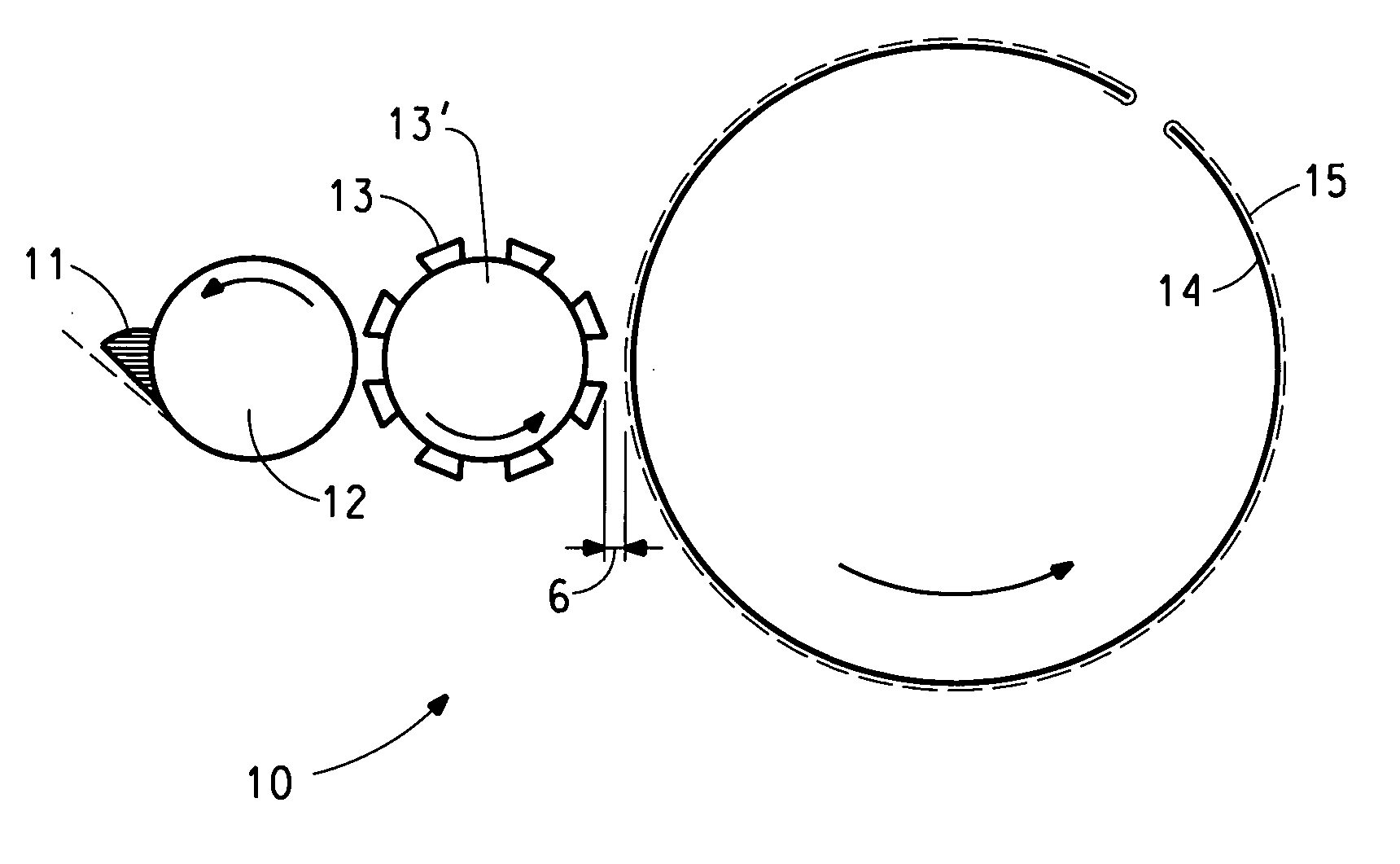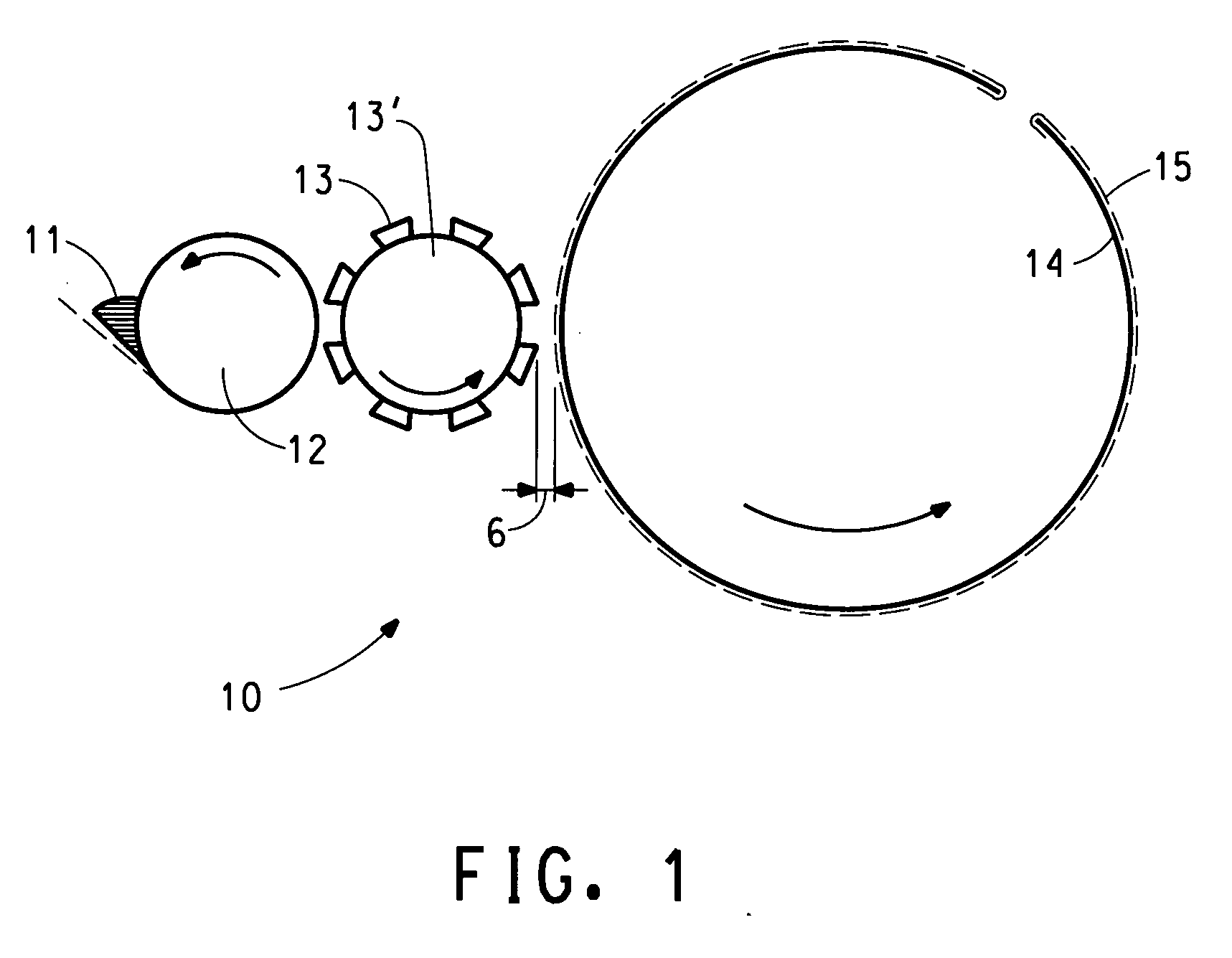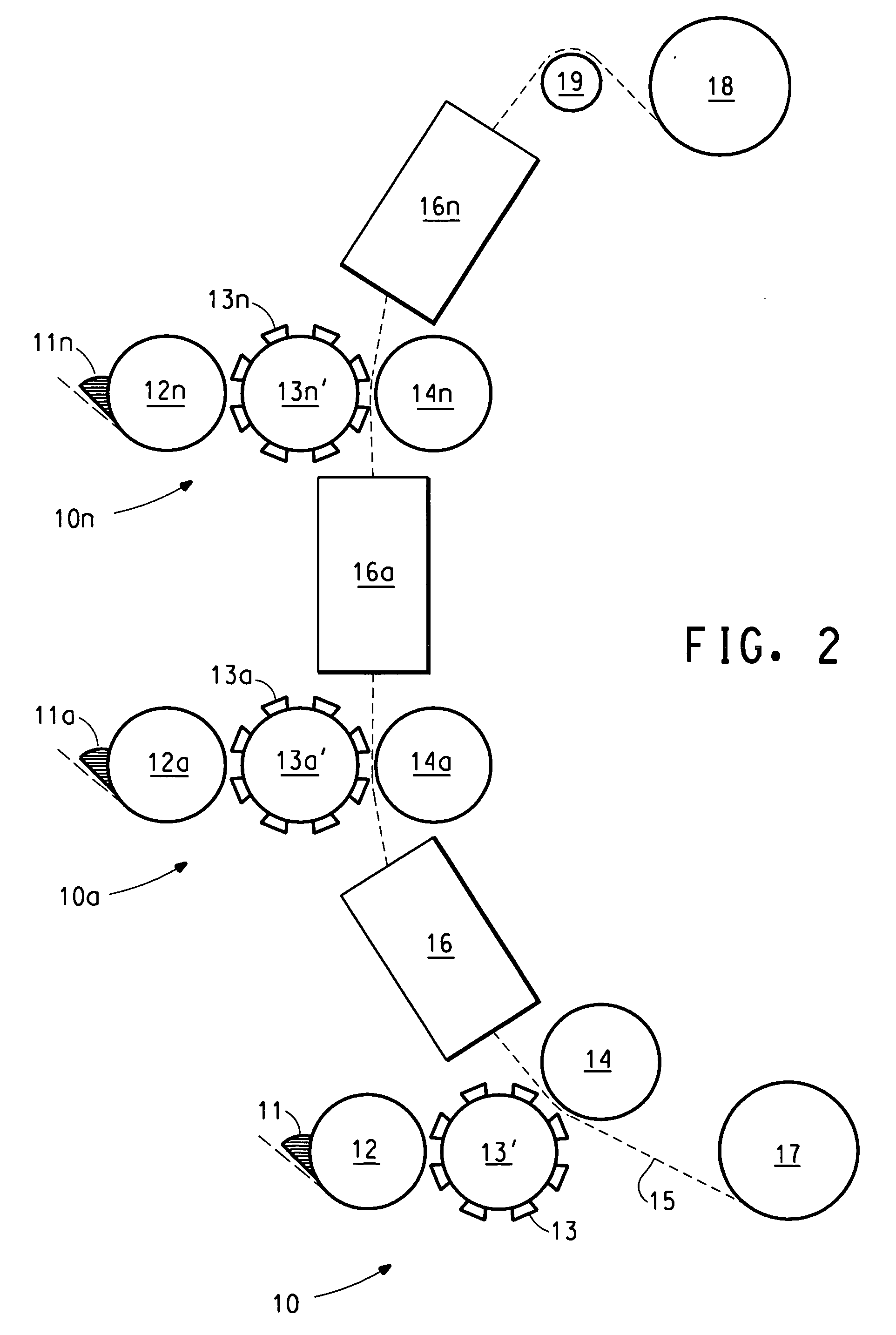Fluoropolymer film made by printing
a technology of fluoropolymer and printing, which is applied in the direction of optical elements, instruments, coatings, etc., can solve the problems of surface abrasion and/or adhesion of amorphous fluoropolymer antireflective coatings that lack adequate resistance to surface abrasion and/or adhesion to substrates, and achieve the effect of minimizing the amount of fluoropolymer was
- Summary
- Abstract
- Description
- Claims
- Application Information
AI Technical Summary
Benefits of technology
Problems solved by technology
Method used
Image
Examples
example 1
[0047] A GMS Proofing Press (Global Media Solutions Ltd., Manchester, England) equipped with a 200 lpi anilox roll and a Cyrel® PLB45 (E. I. du Pont de Nemours & Co., Wilmington, Del. USA) printing plate imaged & cured to give a 5 cm×5 cm printing surface was used to deposit multiple layers of Teflon® AF1601 (E. I. du Pont de Nemours & Co., Wilmington, Del., USA, amorphous copolymer of tetrafluoroethylene and perfluoro-2,2-dimethyl-1,3-dioxole) from solutions of 6.0, 3.0 and 1.5 wt % Teflon® AF1601 in Fluorinert® FC-40 fluoro-solvent (3M, St. Paul, Minn., USA) on high clarity 200D Mylar® (E. I. du Pont de Nemours & Co., Wilmington, Del., USA) at about 240 ft / min for proofer drum revolution. Wet layers were transferred in the sharp exact pattern of the printing plate and dried evenly. Measured Teflon® AF1601 fluoropolymer film thickness for a double impression print / dry, print / dry process were 1000 nm, 500 nm and 200 nm for the above 6.0, 3.0 and 1.5 wt % Teflon® AF1601 solutions res...
example 2
[0048] The GMS press of Example 1 with a finer 440 lpi anilox roll and same Cyrel® PLB45 plate and 3.0 to 4.0 wt % Teflon® AF1601 solutions in a variety of fluorosolvents (FC-40, perfluorooctylethylene (PFOE), perfluorooctane (PFO)) was used to create single impression thickness fluoropolymer films in the range of 70 nm to 120 nm thickness on 200D Mylar. Thicknesses were measured by a Filmetrics F-20 reflectance spectra analyzer. Films produced were visually uniform and continuous.
example 3
[0049] A Mark-Andy printing press (12″ Width, Mark-Andy, Inc., St. Louis, Mo., USA) was equipped with a 440 lpi anilox and a 3.5″×7″ imaged & cured Cyrel® PLB45 plate. A Teflon® SF50 (E. I. du Pont de Nemours & Co., Wilmington, Del, USA, amorphous equimolar copolymer of tetrafluoroethylene and hexafluoropropylene) solution at 1.25 wt % in an 85 / 15 by weight solvent mix of PFO / PFOE was continuously deposited on a 500A Mylar (E. I. du Pont de Nemours & Co., Wilmington, Del., USA) substrate at 28, 120 & 150 ft / min line speeds producing ultra-thin SF50 fluoropolymer films on the order of 20 nm to 30 nm thickness as estimated from SEM cross-section.
PUM
| Property | Measurement | Unit |
|---|---|---|
| Thickness | aaaaa | aaaaa |
| Thickness | aaaaa | aaaaa |
| Thickness | aaaaa | aaaaa |
Abstract
Description
Claims
Application Information
 Login to View More
Login to View More - R&D
- Intellectual Property
- Life Sciences
- Materials
- Tech Scout
- Unparalleled Data Quality
- Higher Quality Content
- 60% Fewer Hallucinations
Browse by: Latest US Patents, China's latest patents, Technical Efficacy Thesaurus, Application Domain, Technology Topic, Popular Technical Reports.
© 2025 PatSnap. All rights reserved.Legal|Privacy policy|Modern Slavery Act Transparency Statement|Sitemap|About US| Contact US: help@patsnap.com



